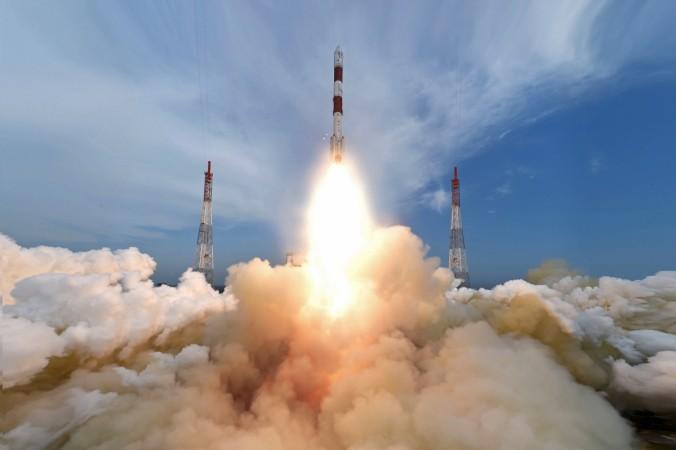
The Indian Space Research Organisation (ISRO) will launch its second unmanned mission to the moon in the first quarter of 2018, and it will look for, among other things, the abundance of minerals and presence of water-ice on Earth's only natural satellite. However, the exact date of the launch has not been announced yet.
"ISRO is working towards the launch of Chandrayaan-2 during the first quarter of 2018," Union Minister of State for Atomic Energy and Space, Jitendra Singh, said in a written reply to a question in the Rajya Sabha, according to a statement from the Department of Space. He said it is a "totally indigenous mission comprising of orbiter, lander and rover."
ISRO already has a number of launches lined up for 2017, from which it looks to earn big moolah. The organisation has already earned more than $62 million from launches conducted for other countries in 2014-15. The Chandrayaan-2, however, will be an Indian launch, but the data gathered from it should be available to scientists across the world.
He added: "The orbiter and rover flight systems are in an advanced stage of realisation. Payloads are under development at various ISRO centres and laboratories. Realisation of an indigenous lander is in progress. Special tests for new systems in the lander have been identified and a Lander Sensors Performance Test (phase-1) over artificial craters created in the Chitradurga district in Karnataka has been conducted. A Lunar Terrain Test facility is ready for the lander drop and rover mobility tests."
It may be mentioned that ISRO Satellite Centre (ISAC) director M Annadurai had earlier said about the lander tests: "Tests are [being] conducted over the simulated craters at Chitradurga. We are using an aircraft to assess whether the sensors on the Lander will do their job [later] of identifying the landing spot on the Moon,"
About the contents of the spacecraft, he said: "The orbiter carrying six payloads will orbit around the Moon in 100 km lunar orbit. The payloads will collect scientific information on lunar topography, mineralogy, elemental abundance, lunar exosphere and signatures of hydroxyl and water-ice."














